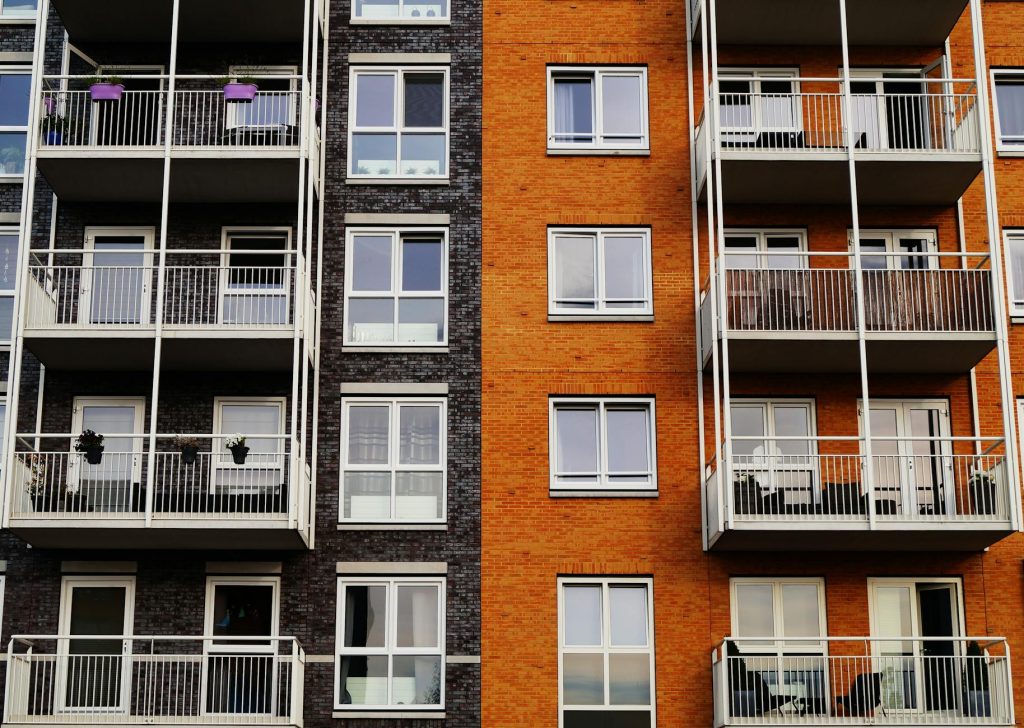I learned what “estrato” meant in Bogotá at 8 a.m. on a Tuesday when the realtor asked, “¿Está bien el estrato cuatro para ti o prefieres cinco?” I nodded like a bobblehead on a pothole, thinking we were discussing floors, not socioeconomic labels. Ten years of living in the Dominican Republic had prepared me for blackouts, noisy motorbikes, and landlord WhatsApp voice notes, but not for a number that could nudge my electric bill and my neighbors’ small talk. That morning, my Spanish felt solid, yet my cultural comprehension lagged behind. That is, until coffee, Google, and a crash course courtesy of a very patient portero.
I’m James, a 33-year-old expat who calls Santo Domingo home and Medellín my guilty pleasure. I’ve bartered for avocados in Spanish and debated the merits of a buen sancocho versus ajiaco with equal passion. But apartment-hunting in Colombia forced me to recalibrate my compass. “Estrato” turned out to be a word that unlocks more than utilities; it opens doors to understanding class, services, and how people locate themselves in the city’s story. It also taught me why mastering not just grammar, but the right Spanish Vocabulary for the moment, is everything.
What Estratos Are—and Aren’t
Colombia classifies residential areas from estrato 1 to 6, a scale that influences the price you pay for water, gas, and electricity. In practical terms, lower estratos (1–3) receive subsidies and higher ones (5–6) pay contributions. Middle estrato 4 tries to be Switzerland. It’s not a moral label or a measure of someone’s worth, though people sometimes talk about it like it is. If you’re shopping for a place in Bogotá or Medellín, the estrato tells you about the neighborhood’s services and the expected costs, not your destiny.
A cultural footnote matters here. In Colombia, people often mention estrato casually: “Vivo en estrato tres, por Cedritos,” the way you might say “I’m on the north side.” That frankness can feel startling if you’re coming from the Dominican Republic, where we talk about sectores or residenciales, but rarely assign a number to identity. Adding “estrato” to your Spanish Vocabulary will help you follow the plot when Colombians trade addresses like baseball stats.
Why Estrato Matters When You’re Apartment-Hunting
Stride into the market without clocking estrato and you’ll miss the silent math. Utilities, known as servicios públicos, shift by estrato, and administration fees—the administración you pay to the building—tend to scale with amenities and security. Think elevators, portería 24 horas, and a gym that no one uses in January. Internet packages can also vary by area, and delivery platforms may have different coverage or fees across the city’s gradient. When a listing boasts, “estrato 5, administración incluida,” the price tag might conceal your monthly bills, which can feel like relief or illusion depending on the season.
Estrato also influences how people perceive commutes and safety. In Medellín, a “unidad cerrada en estrato 3 cerca del metro” might charm a practical renter who wants public transport and a close-knit vibe. In Bogotá, you’ll hear debates about windswept streets and proximity to transmilenio. In both cities, the cultural conversation around estrato can shade attitudes, so it’s useful to listen respectfully and gather your own impressions—ears open, judgments locked away.
Colombia vs Dominican Republic: Two Ways of Talking About Neighborhoods
When I fly back to Santo Domingo, I shift my headspace from numbers to names. The DR leans on sectores like Naco, Piantini, Gascue, or Ensanche Ozama, and on the feel of a callejon vs. a torre with a tight-lipped doorman. Instead of estratos, we parse generators and inverters for the power grid, water pumps that behave, and whether the neighbor’s colmado is the soul of the block or a DJ booth in disguise.
Both countries index space by access, but Colombia codes it overtly through estratos, while the DR encodes it through building type, street energy, and how often the luz behaves. I’ve had Colombian landlords ask for a codeudor or a póliza de arrendamiento from a aseguradora, while Dominican landlords happily take two months’ depósito and a handshake. The cultural emphasis shifts, and that shift deserves attention in your Spanish Vocabulary if you want to sound local and choose wisely.
Reading Ads and Talking to Agents Without Getting Lost
Apartment ads in Colombia are compact puzzles. “Canon incluye administración, estrato 4, amoblado, servicios aparte” packs a week’s worth of questions into ten words. Canon is rent, administración is your building fee, amoblado is furnished, and servicios aparte means you’ll shoulder utilities. You may see unidad, conjunto, or urbanización—each a flavor of residential complex with different gatekeeping rituals and social etiquette. If a listing reads “sin ascensor” on the fifth floor, start walking in circles now to train your calves.
Hearing these terms in real time adds pressure, especially when your brain is juggling accents. Bogotanos can sound clipped and precise; paisas in Medellín sing their intonation up and down a mountain. The rhythm shifts from the Caribbean lilt I’m used to in Santo Domingo. Learning the specific Spanish Vocabulary of housing—fiador, extractos bancarios, depósito, administración incluida—keeps your conversations fluid, your eyebrow unraised, and your budget unambushed.
The Fine Print: Fiador, Aseguradora, and the Paper Trail
Many Colombian landlords prefer guarantees: a fiador who owns property, or a lease backed by an aseguradora through a póliza de arrendamiento. These companies vet your job, bank statements, and sometimes your horoscope—kidding, mostly. Without local paperwork, expats often pay several months upfront or use a co-signer service. In the DR, I’m more likely to negotiate a depósito and promise to treat the place like my grandmother is watching.
Etiquette also diverges. In Colombia, agents often address you with usted, in a dance of courteous distance. In the DR, strangers slip into tú or even a playful mi amor if the morning coffee is strong. Knowing when to mirror usted builds trust faster than any perfectly conjugated subjunctive. Your Spanish Vocabulary should carry politeness markers as carefully as it carries verbs.
Spanish vocabulary
| Spanish | English | Usage Tip |
|---|---|---|
| Estrato | Socioeconomic tier | Always ask which estrato; it affects utility rates and perceptions. |
| Canon (de arrendamiento) | Monthly rent | Canon sometimes includes administración; verify “incluida” or “aparte.” |
| Administración | Building/HOA fee | Common in Colombia; in DR you’ll just hear “mantenimiento.” |
| Portería | Front desk/security | Ask about 24/7 hours; it affects deliveries and peace of mind. |
| Fiador / Codeudor | Guarantor / Co-signer | Common in Colombia; can be replaced by an aseguradora policy. |
| Aseguradora (póliza) | Insurance company (lease policy) | Speeds approval if you lack local history; expect paperwork. |
| Servicios públicos | Utilities | Ask which are included; estrato affects their pricing. |
| Amoblado / Sin amoblar | Furnished / Unfurnished | In Colombia, “amoblado” often means ready with basics; confirm inventory. |
| Conjunto / Unidad | Residential complex | Similar idea; “unidad cerrada” signals gated access and amenities. |
Example Conversation: Touring a Bogotá Apartment, From the WhatsApp Ping to the Portería
Agente: Buenos días, señor, ¿usted ya vio el aviso del apartamento en estrato 4? (Colombia)
Agent: Good morning, sir, did you already see the apartment listing in estrato 4? (Colombia)
Yo: Sí, lo vi. Vengo de Santo Domingo y ando aprendiendo cómo funciona eso del estrato. (Colombia/DR)
Me: Yes, I saw it. I’m coming from Santo Domingo and I’m learning how the estrato thing works. (Colombia/DR)
Agente: Tranquilo, acá el canon incluye administración, pero los servicios van aparte. (Colombia)
Agent: No worries, here the rent includes the building fee, but utilities are separate. (Colombia)
Yo: Perfecto. ¿La portería es 24 horas? Y otra cosa, ¿se puede con aseguradora? (Colombia)
Me: Perfect. Is the front desk 24 hours? And another thing, can we use an insurance policy? (Colombia)
Agente: Sí, señor. Con póliza sale rápido. ¿Usted trabaja remoto? (Colombia)
Agent: Yes, sir. With a policy it goes fast. Do you work remotely? (Colombia)
Yo: Sí, y necesito internet estable. En RD a veces esa **vaina** se cae. (DR)
Me: Yes, and I need stable internet. In the DR, that thing sometimes crashes. (DR)
Agente: Aquí la fibra es buena. El barrio es muy **bacano**, cerca al TransMilenio. (Colombia)
Agent: The fiber here is good. The neighborhood is really cool, close to TransMilenio. (Colombia)
Yo: ¡Qué bien! ¿El apartamento es amoblado o sin amoblar? (Colombia)
Me: Nice! Is the apartment furnished or unfurnished? (Colombia)
Agente: Amoblado. Si quiere, le muestro otro en estrato 3, más barato. (Colombia)
Agent: Furnished. If you want, I’ll show you another in estrato 3, cheaper. (Colombia)
Yo: De una, me interesa ver las dos opciones. Usted me dice la hora. (Colombia)
Me: For sure, I’m interested in seeing both options. You tell me the time. (Colombia)
Portero: Buenas, ¿a cuál apartamento va? ¿Ya lo registraron? (Colombia)
Doorman: Hello, which apartment are you going to? Have they registered you? (Colombia)
Yo: Sí, voy con la señora de la inmobiliaria. Soy el inquilino nuevo, ojalá. (Colombia)
Me: Yes, I’m with the lady from the agency. I’m the new tenant, hopefully. (Colombia)
Agente: Pase, joven. Si tiene dudas, me escribe al WhatsApp. (Colombia)
Agent: Come in, young man. If you have questions, message me on WhatsApp. (Colombia)
Yo: Gracias. En RD dirían “esa **vaina** se ve heavy”, pero aquí creo que se dice “está una nota”. ¿Cierto? (DR/Colombia)
Me: Thanks. In the DR they’d say “that thing looks dope,” but here I think you’d say “it’s awesome.” Right? (DR/Colombia)
Agente: Jajaja, sí, también decimos “qué **bacano**”. Bienvenido. (Colombia)
Agent: Haha, yes, we also say “how cool.” Welcome. (Colombia)
Accents, Politeness, and the Social Thermostat
Colombian usted is like a fleece jacket: always useful, easy to take off later. Begin formal with agents, owners, and porteros, and watch if they switch to tú. In the DR, I start friendlier by default; tú arrives early, and good humor shortens distance. Both approaches aim for the same thing—respect and warmth—but the dials are set differently. Hearing those dials click in real time improves your listening, and responding with the right register builds credibility faster than a fancy résumé.
Accent-wise, I love the paisa melody that lifts the end of the phrase like an invitation, and the Bogotano precision that makes consonants behave. Dominican Spanish breaks into the room with swing and trims syllables like a barber. When you adapt to these changes, your Spanish Vocabulary becomes more than words; it’s the soundtrack of how you fit into each city’s rhythm.
Questions to Ask Without Sounding Like a Detective
When I tour, I sound curious, not suspicious, but I never leave without clarity. “¿La administración está incluida? ¿Cómo están los servicios en promedio?” opens the door to numbers. “¿La portería recibe paquetes?” saves you from the vanishing parcel mystery. “¿Hay vecinos que hacen fiestas?” said with a smile, gives you the weekend forecast. In Medellín, I ask about the metro; in Bogotá, the wind and the sunlight. In Santo Domingo, I ask about planta and inversor, the two saints of electricity. The questions differ, but the spirit is the same: be informed, be kind.
More than once, a realtor assumed my confusion was linguistic when it was cultural. I understood every word and still didn’t grasp the weight of estrato until I paid a few bills. That’s the gap between vocabulary and comprehension, the one you cross only by living it. It’s why collecting the right Spanish Vocabulary matters—because a single term can carry a whole neighborhood’s story on its back.
Money, Expectations, and the Art of Saying No
In Colombia, you’ll hear: “Con fiador es más fácil.” Without one, you may pay more upfront or offer a stronger employment letter. In the DR, you’ll hear: “Dos depósitos y un mes adelantado,” followed by a promise that the water pump “está nítida.” Negotiation styles shift; some Colombians are rules-forward with the agency, while many Dominicans prefer direct landlord chats with flexible outcomes. I’ve had better luck in both countries by stating my needs clearly, offering documents early, and staying patient—calm Spanish speaks volumes.
One time in Laureles, I loved a place that smelled suspiciously like mystery incense. The agent glided past it. I used my best polite-assertive voice: “Me encanta el espacio, pero el olor me preocupa.” We opened windows, we waited, we laughed. I passed on it, and he still sent me another listing the next day. Respectful honesty is a universal currency.
When a Number Shapes a Community
Estrato’s most poignant lesson is how policy intersects with daily life. Neighbors in estrato 2 might pay less for services but hustle harder to access perks. A building in estrato 5 might fund prettier gardens and still be one bus stop away from the best empanada in town. As a foreigner, I try not to read the scale as a moral scoreboard. Instead, I treat it like a map of costs and context, then explore with empathy. Around the corner from any label is a café where the barista remembers your order before you do.
I’ve learned to ask local friends how they feel about their barrio rather than default to the number. People’s self-descriptions are warmer than any grid. They point you to the bakery, the park at sunset, the streets to avoid in a downpour. That’s where your Spanish Vocabulary evolves—from terms to textures, from dictionary entries to lived meaning.
Fieldwork for the Curious Expat
Here’s my favorite exercise when I land in Colombia: I take two back-to-back tours, one in estrato 3 and one in estrato 5, then I buy a coffee on a bench and eavesdrop gently. I listen for usted vs. tú, the way porteros greet couriers, how kids negotiate soccer field time. Then I call a friend in Santo Domingo and compare notes—how our edificios have generators, how the colmado knows your brand of milk by week two.
Switching countries sharpens your ear like switching playlists. Your brain toggles between rhythms, idioms, and expectations, and your Spanish Vocabulary expands the way a city glows when the evening lights click on. It’s not homework; it’s a scavenger hunt for meaning.
Spanish in the Wild: Micro-Moments That Teach
Once, a Bogotá neighbor in estrato 4 invited me to a potluck with the phrase, “Caiga, que acá no somos de rosca.” I knew rosca as donut, not clique. New word, new nuance. In Santo Domingo, my doña downstairs says, “Papito, esa **vaina** sube la luz,” when I leave the AC too cold. One country nudged me to mind policies; the other prodded me to mind people. Both remind me that idioms carry domestic wisdom you won’t find in a textbook.
If your goal is to learn Spanish as an expat, apartment-hunting is a masterclass. You negotiate time, money, and expectations while building the lexicon you actually need on a Tuesday. You’ll collect phrases, discover which smiles unlock which elevators, and understand why some neighbors wave on day one and others wait a week. That’s the fluency everyone wants: not perfect grammar, but confident belonging.
Putting It All Together, One Key at a Time
Before you sign anything in Colombia, read the contract for clauses on pintura, mascotas, and termination. Clarify whether small appliances are included; not every amoblado loves forks. Walk the route to the nearest bus or metro; notice your instincts at nightfall. Ask about the average bill in that estrato and keep a spreadsheet if you’re nerdy like me. In the DR, test the water pressure, confirm the inversor’s battery life, and say hello to the colmado—your unofficial concierge.
And always, stash essential Spanish Vocabulary in your pocket. When a porter recognizes that you know what portería, administración, and fiador mean, you stop being just a foreigner and become a neighbor with shared grammar. People open up. They tell you where the best arepas hide and which building group chat is the spiciest chaos you’ll ever mute.
Final Thoughts: Two Countries, One Sharper Ear
Moving between Colombia and the Dominican Republic is like switching lenses. In Colombia, estrato tunes you to policy and pricing; in the DR, sectors and stories tune you to relationships and resilience. The back-and-forth keeps my listening muscles strong. It teaches me to weigh words and context with equal care, to detect when usted is courtesy and when it’s a fence, and to hear the difference between **bacano** and **heavy** as two ways of saying, “I feel at home.”
If you’re on this path to learn Spanish as an expat, I hope estratos stops being a mystery and becomes a tool—one that saves you pesos and opens conversations instead of closing them. Keep traveling across accents, neighborhoods, and norms, and let your Spanish Vocabulary grow with the journey. I’d love to hear your cross-country lessons: What surprised you about apartment-hunting in Colombia or the DR? Which words did you have to learn the hard way? Drop your stories and new vocab in the comments, and let’s build this glossary together, one lease at a time.










